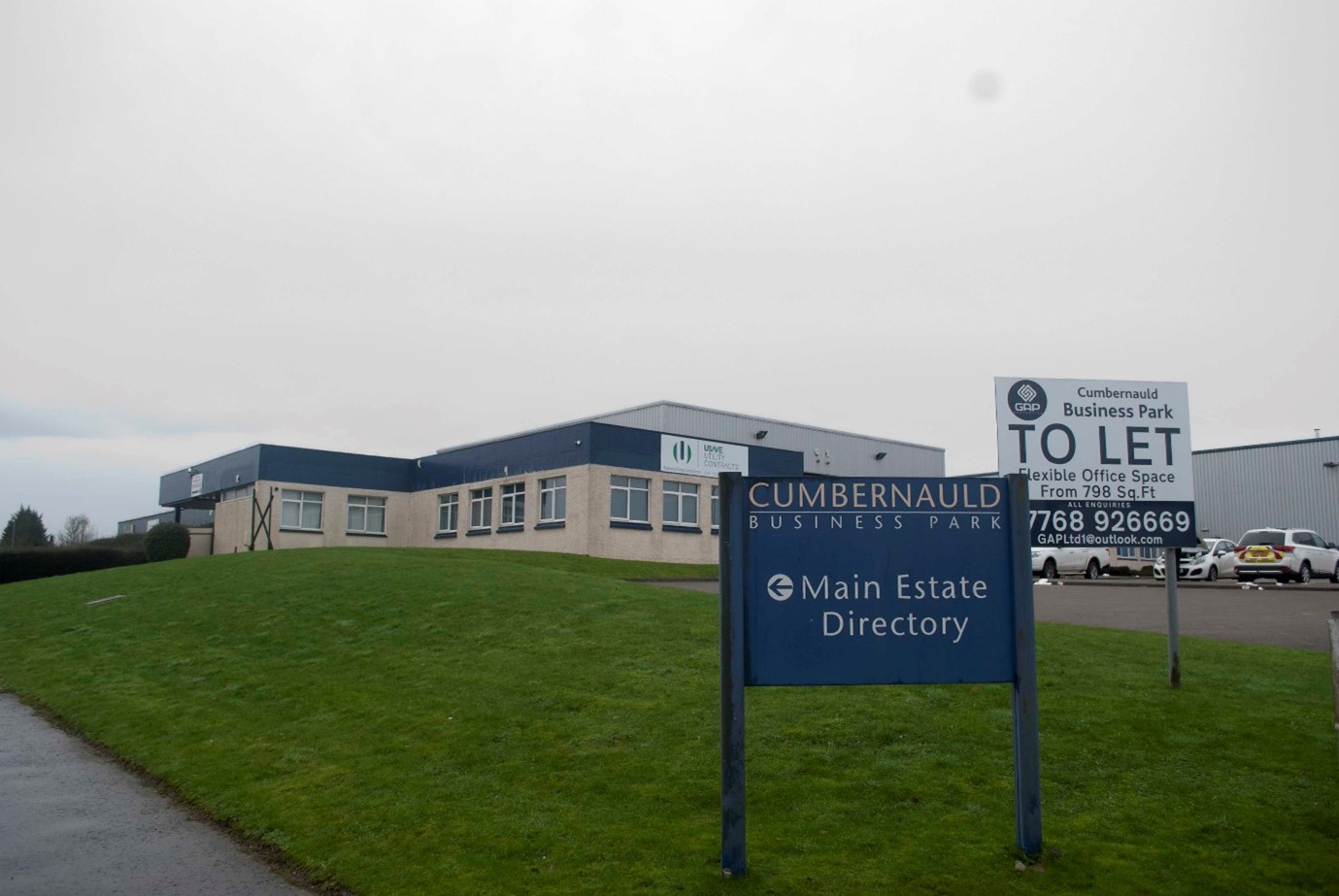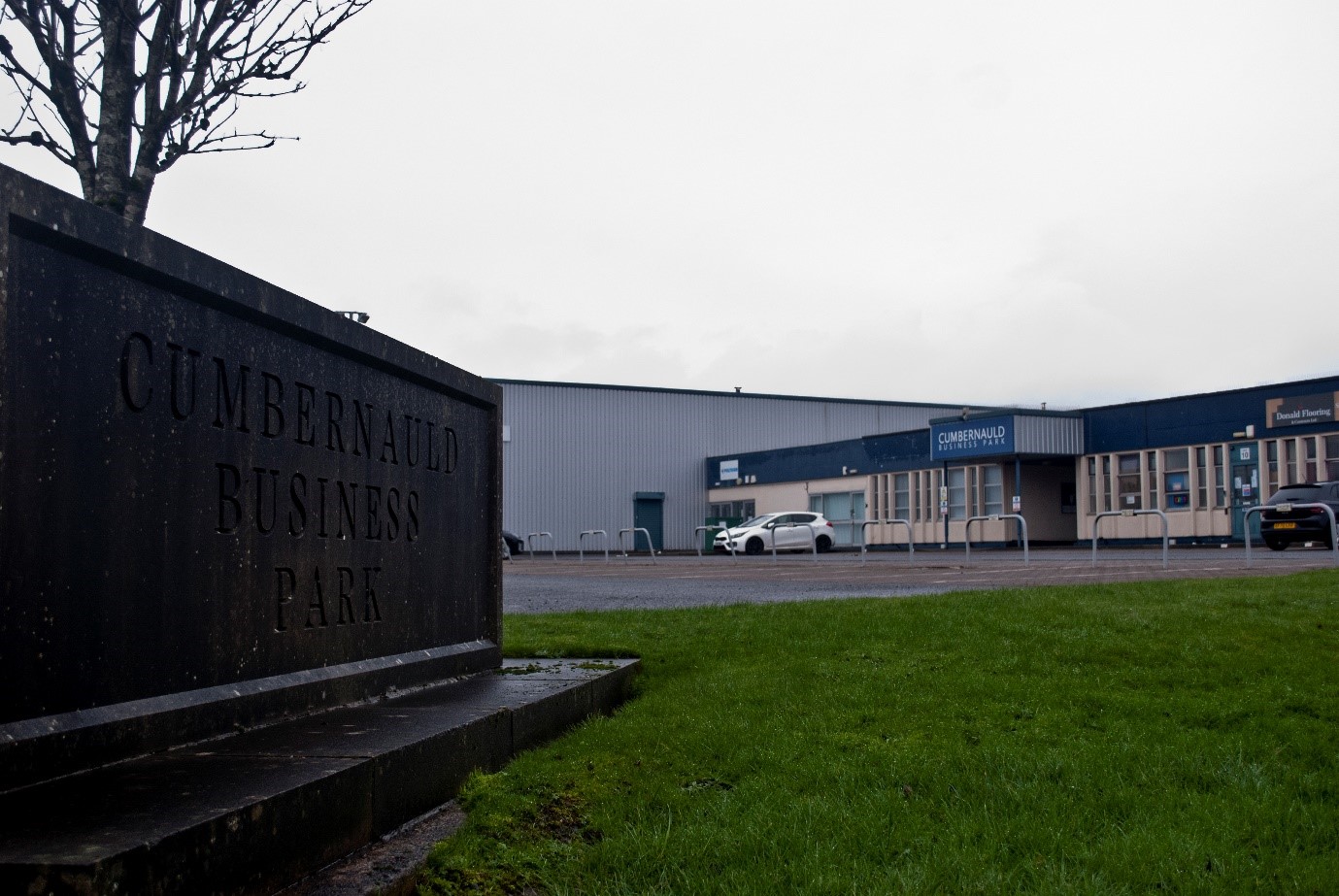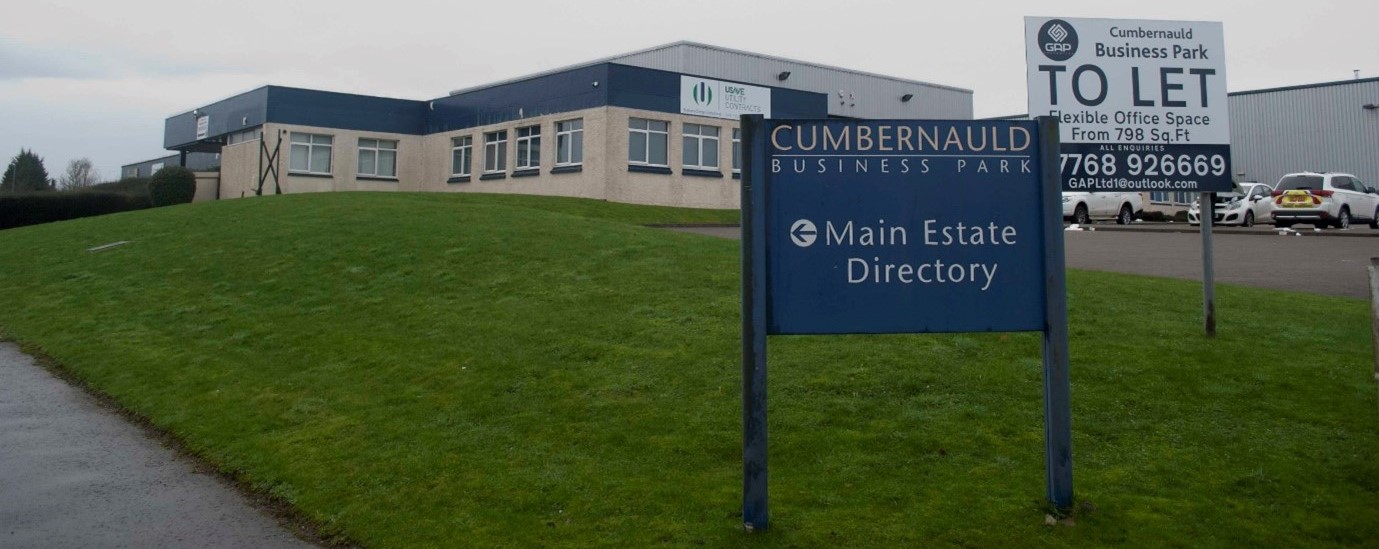Find out more about The Open University's Social Sciences courses
This article belongs to the Women and Workplace Struggles: Scotland 1900-2022 collection.

A few months after the much-reported sit-in at the Lee Jeans factory in Greenock, workers at the Lovable plant in Cumbernauld were also informed that the future of their factory was uncertain. The predominantly female workforce responded in a similar manner as the Greenock workers. They argued against the necessity of closure, and launched a 24-hour occupation, before moving to an external picket of the company’s warehouse. As with the Lee workers, their action was successful in preventing closure, and the women returned to their machines on 18 March 1982 to work for Modewear Ltd. The dispute is highly significant in our understandings of women’s opposition to factory closure in the period.
Cumbernauld: the growth of a new town
Cumbernauld was one of five new towns designated in post-Second World War Scotland to combat the overcrowding of people and industry in Glasgow, and to take some of the population that was designated to be ‘overspilled’ from the city. The land surrounding Cumbernauld Village, which was situated in the historic county of Dunbartonshire, was designated in 1956, and the aim of Scotland’s urban planners was to create a fully integrated, modern ‘town for tomorrow’. Modern manufacturing was central to these plans. Throughout the 1960s and 1970s, the growth of Cumbernauld was substantial. The population increased from 3,000 to 43,000 between 1957 and 1975. Manufacturing similarly prospered: 200 firms were established in the town by 1980, with total employment in the sector growing to 8,500. Despite this success, Cumbernauld’s manufacturing employment was heavily skewed towards a small number of American-owned firms. By 1975, 45 per cent of manufacturing workers were located in only three US multinationals. This situation made the town, and its new population, particularly vulnerable to changes in corporate strategy and economic forces.
In the early 1980s, as with many other localities across Central Scotland, Cumbernauld new town suffered its first major economic challenge. During 1981, unemployment increased by 22 per cent. In response, a Cumbernauld ‘Right to Work’ campaign group was established, picketing job centres and protesting over the failed promises of economic security that had tempted many to move to the town. It was within this context of rising unemployment that the workers at the town’s second largest employer, Lovable Bra, were threatened with the closure of their factory. Lovable worker Kathy Lawn summed up the feelings of many, telling the Evening Times that Cumbernauld is ‘not a new town; it’s a buroo town!’ (‘buroo being a Scots term for unemployment benefit, quoted in Evening Times on 18 January 1982).
Lovable Bra
Lovable Bra was established in Atlanta, Georgia, by Frank Garson in 1926. Throughout the twentieth century, it continued to grow and expand, becoming one of the largest bra manufacturers in the United States. In the 1960s, the firm looked to establish a manufacturing base in the UK. The firm was impressed by the modern design of the new town and were tempted by the government assistance available to relocating firms to areas of economic decline such as in the West of Scotland. Production began at Lovable’s Cumbernauld plant in early 1965. The local authority was delighted to attract such a large name; however, there were concerns from local councillors that manufacturing employment was becoming overly feminised, with too many women going out to work. Once approving Lovable, the General Manager of the Cumbernauld Development Corporation informed the Corporation that “he [would] advise the board of trade informally that, until further notice, no more enquiries to be considered for clothing firms’ (‘Minutes of the Industry Committee of Cumbernauld Development Corporation, 1965 – 1969’, meeting of 19 January 1965).

The former Lovable factory in Wardpark South. Now subdivided units called the 'Cumbernauld Business Park', January 2022. Picture by Thomas Smillie Photography.
Lovable’s Cumbernauld operations quickly grew. As well as the factory in the Wardpark South Industrial Estate, two miles from Cumbernauld town centre, they opened warehouse facilities in the Blairlinn estate, near Greenfaulds. The workforce grew to 480, with approximately 93 per cent being women who were working on the production line. Despite the economic challenges facing the new town, in early 1981 there were no apparent issues threatening the future of the plant. However, in October of that year, shop steward Sadie Lang was informed that the firm had been placed into receivership and its viability was doubtful. This announcement stunned the workforce. The Cumbernauld News (22 October 1981) reported that the ‘first the workforce knew of the company going bankrupt was after the Receiver had been brought in’. Fred Dickson, Scottish Divisional Officer of the National Union of Tailor and Garment Workers (NUTGW) argued that the company ‘never said anything’ about the possibility of closure prior to the announcement.
The Lovable Dispute
The situation at Lovable was much different from Lee Jeans in Greenock, and in many other cases where occupations have been launched to oppose closure (for an overview, see Tuckman, 2021). Rather than being told that the factory would close, the process of receivership brought in a third-party, and the future was unclear. The workers, and their NUTGW representatives, also accepted initial rounds of redundancy, as it was hoped that these would protect the plant’s long-term future. 123 workers were immediately made redundant. In January 1982, the receiver announced that they were in advanced negotiations to sell the firm to Lovable Spa (Italy) and Berlei (UK) Ltd. It was this announcement that led to the workers occupying the plant; Lovable Spa and Berlei had a track record of asset-stripping Lovable sites and relocating production to Italy. The receiver could not guarantee that Cumbernauld would retain a production site; the Lovable workers then chose to remain in the plant and prevent the removal of stock and machinery.
This action was considerably different from traditional instances of worker occupation. While they did maintain a 24-hour presence, production continued as normal during the day, with groups of workers remaining on-site following the end of their shifts. This meant that control of the site was always temporary and relinquished daily to plant management. The workers who remained on-site passed time by playing games, listening to music, and sleeping on sofas in the management offices. This continued through January and early February, when the workers ‘reluctantly accepted’ a further 200 redundancies, which was hoped would prevent the full closure of the site. At this point, only a quarter of the 1981 workforce remained employed with Lovable.
From Sit-in to Picket
On 17 February 1982 the workers’ worst fears were realised, as it was confirmed that the factory would close immediately. Due to the lack of leverage that the workers had gained through their nightshift-only occupation, they felt unable to maintain a presence in the plant. The factory gates were locked, and the workers left the plant. However, they refused to accept that their struggle was over. Lang worked with the NUTGW to secure a caravan to picket the firm’s warehouse in Blairlinn, to prevent the removal of the £1.5 million of stock. This action proved highly effective; while the plant was closed and empty, Lovable remained unable to transport valuable products to customers, and the workers’ opposition to closure remained publicly visible. The picket was loosely organised. Rather than a shift system, former Lovable worker Alison Cairns recalled in our 2015 interview that workers would:
Put their name forward who was willin’ to do it. And it, just kinda worked it among wurselves really. There was a sheet up and you’d say ah can do it what night, cannae do it that night.
Despite a low level of organisation by the occupation’s leadership, and no coordinated effort to gain support from the wider labour movement or the local community, the picket succeeded in preventing the removal of stock. In early March, the workers’ actions were vindicated, and it was announced that a buyer had been found for the plant. Factory management were involved in the takeover, with Gordon Matheson continuing as General Manager, maintaining a degree of continuity with the Lovable operation. There was outside involvement in the buyout, with the Scottish Development Agency owning one-third of the business, and new Chairperson Bernard Garner coming from outside Lovable UK.
The news came as a surprise to the workers who remained on the picket. Josephine King stated in our 2014 interview that:
When ah came back [to the caravan], the [journalists from the] papers were there and the champagne and everythin’, we’d won… Sadie Lang and Gordon Matheson come up, and said that wis us, we’d won.
News of the workers’ victory travelled quickly, with family members arriving at the warehouse to offer congratulations before they went to a local social club to spread the news to a few of the workers they knew would be there.
On 18 March, production resumed on a reduced scale, with 92 workers returning to the site to work for Modewear Ltd, with the hope and expectation that employment would grow once production was resumed. This ended what The Herald later referred to as a ‘most unpleasant bankruptcy and sit-in’, and Modewear began producing garments, still trading under the Lovable name (The Herald, 22 February 1984).
Concluding Thoughts: The Significance of the Lovable Occupation
The Lovable sit-in differed significantly from most occupations launched in Britain in the later twentieth century. Rather than the workers seizing full control of the workplace, this was only temporary, and was handed back to management at the start of each working day. These workers also accepted ‘necessary’ redundancies, in an attempt to secure the future of the site. Additionally, when it was announced that the plant would close, the workers vacated the premises and picketed from outside the warehouse. Despite these key differences, the outcome was successful; the factory was bought-over, the workers returned to their sewing machines, and the plant eventually reached pre-receivership employment levels. Modewear remained in operation in Cumbernauld until the mid-1990s. Thus, only a few months after the Lee Jeans workers secured their jobs, another female workforce in West Central Scotland achieved a similar result through refusing to accept the corporate rationale for closure.

'Cumberland Business Park', January 2022. Picture by Thomas Smillie Photography.




Rate and Review
Rate this article
Review this article
Log into OpenLearn to leave reviews and join in the conversation.
Article reviews